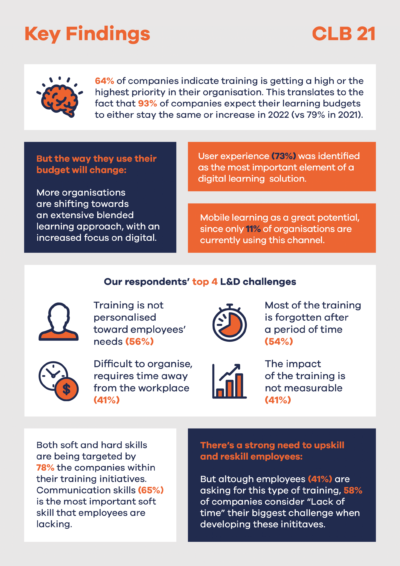What is Blended Learning: the benefits and how to implement it

Blended learning is a relatively new approach to teaching and training, which makes digital learning central to the learning process as a whole. It augments traditional methods without seeking to replace them by using a reliable, imaginative, online learning platform as a compliment to in-person training sessions.
This makes training more learner-focused, flexible, effective and affordable. Which can be liberating for both teachers and learners and enrich both individual study and group sessions.
There are 4 main models of blended learning:
- Rotation model
Rotation between different kinds of learning activities, this can be at different ‘stations’, individual or group based, on and offline, but is in-line with a fixed schedule.
- Flex model
Primarily online knowledge consumption, with in-face sessions tailored to the individual’s needs.
- Self-blend model
Learners find the combination of online and offline modules that works best for them.
- Enriched virtual model
Everyone in the training group works with the same balance of online to face-to-face and in-person sessions.
When digital solutions are used to totally replace part of traditional teaching this is sometimes referred to as ‘hybrid learning’, but these terms are often used interchangeably. The important takeaway is: Both learning approaches place digital at the centre of how training is developed, delivered and applied.
Organisational benefits of blended learning
- It’s massively adaptable: customisable to each individual organisation and each individual learner, regardless of industry, topic or location. You can manage and develop your training to make it more effective and efficient. A mobile solution like MobieTrain’s can be incorporated into your existent programme or used as a stand-alone solution.
- Depth & breadth: delve deeper into subjects that learners have already tried online and centre group discussion around real difficulties. Use actionable insights from online data to monitor progress, tailor individual learning paths, and tackle areas that still need to be mastered.
- Improve outcomes for staff: use gamification and audio visual content to improve adoption and engagement, microlearning techniques to improve knowledge retention.
- Impact your bottom line: faster and more effective training helps your bottom line, and a solution optimised for smartphone use saves resources.
How to use blended learning in your organisation
You know what blended learning is, but how do you actually implement blended learning in you organisatie? In essence a blended learning system allows you to give your team the best possible range of learning tools at their disposal. You tailor the content that you want to offer at different times and in different ways, depending on what best fits the organisational culture, ethos, timetable and style. This is mirrored within the digital environment to produce a coherent whole.
You may want to ask yourself questions such as:
- How many people do I need to roll this out to? And, by when?
- What blocks of knowledge do they need to cover in order to participate in group discussion?
- Or should we start with group discussion to sharpen their focus for knowledge learning?
- Should our digital platform be used as a stand-alone option, or is it more useful before/after in-person work?
As you go, you will be creating your own Blended Learning Strategy that incorporates the best of both on and offline worlds.
Ready to start with blended learning?
If you want tips or advice on figuring out which blended learning approach would work best for your organisation, just ask us, we’ll be happy to help you puzzle it out.

